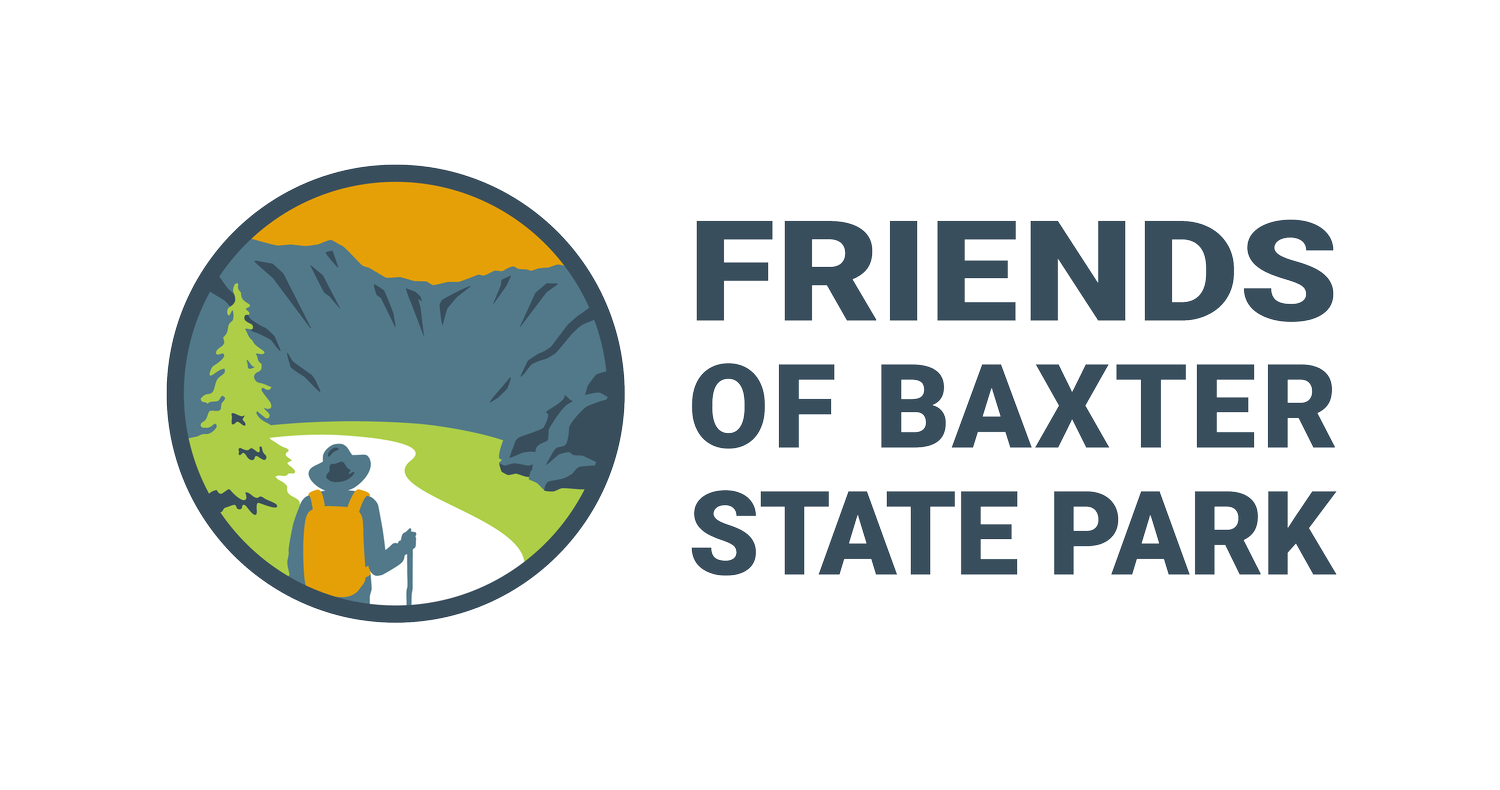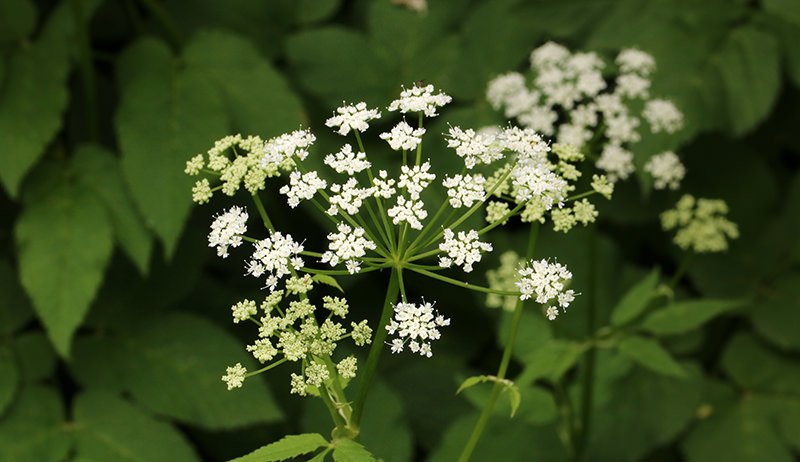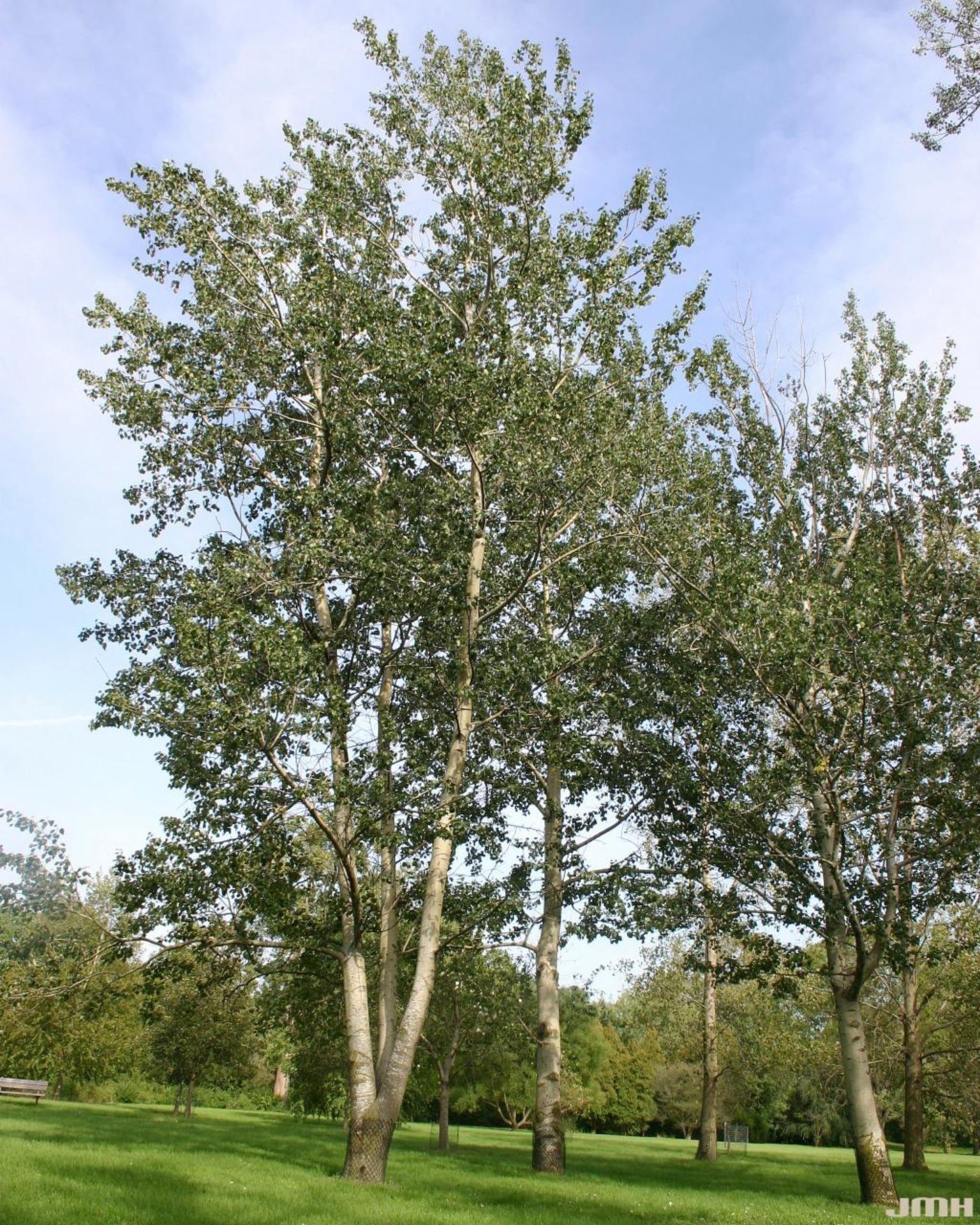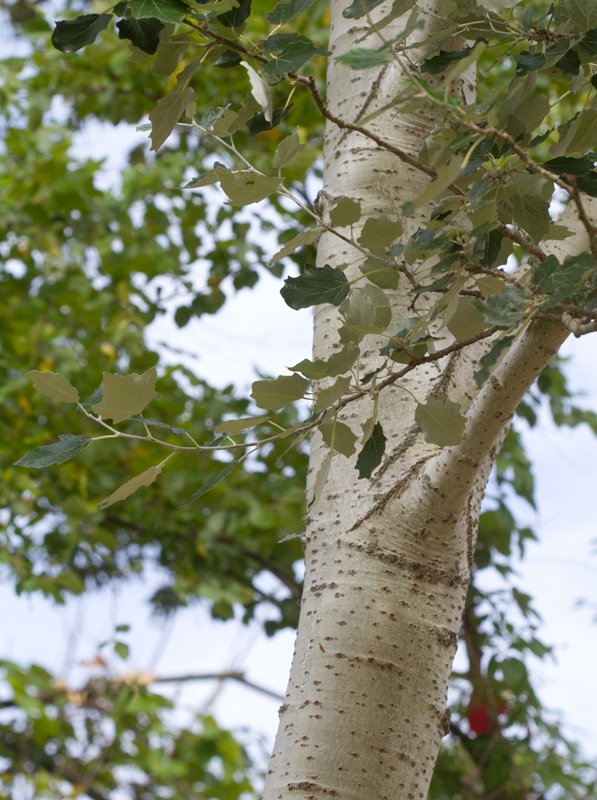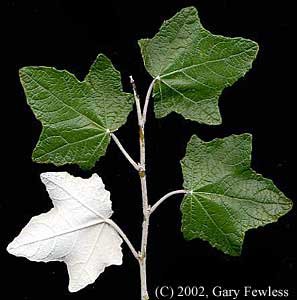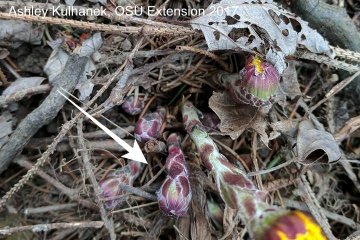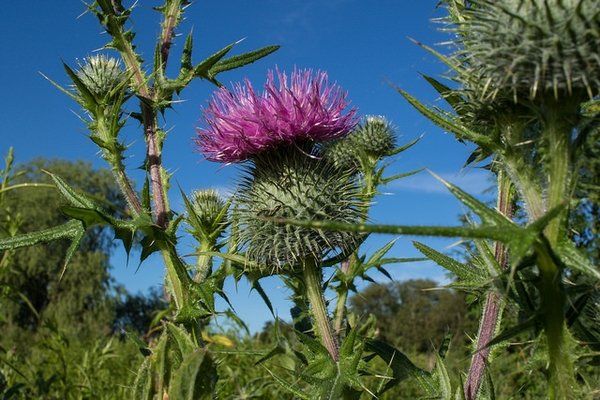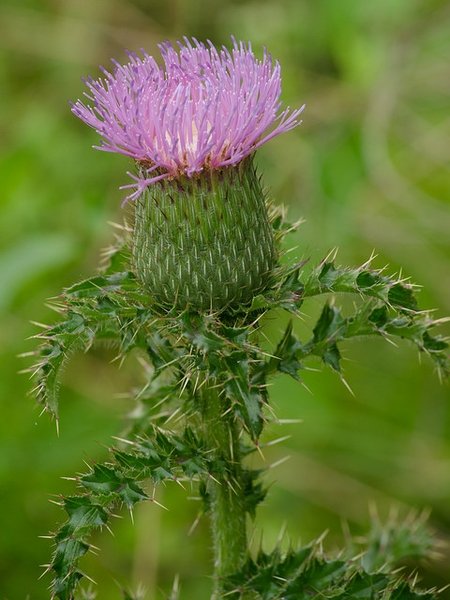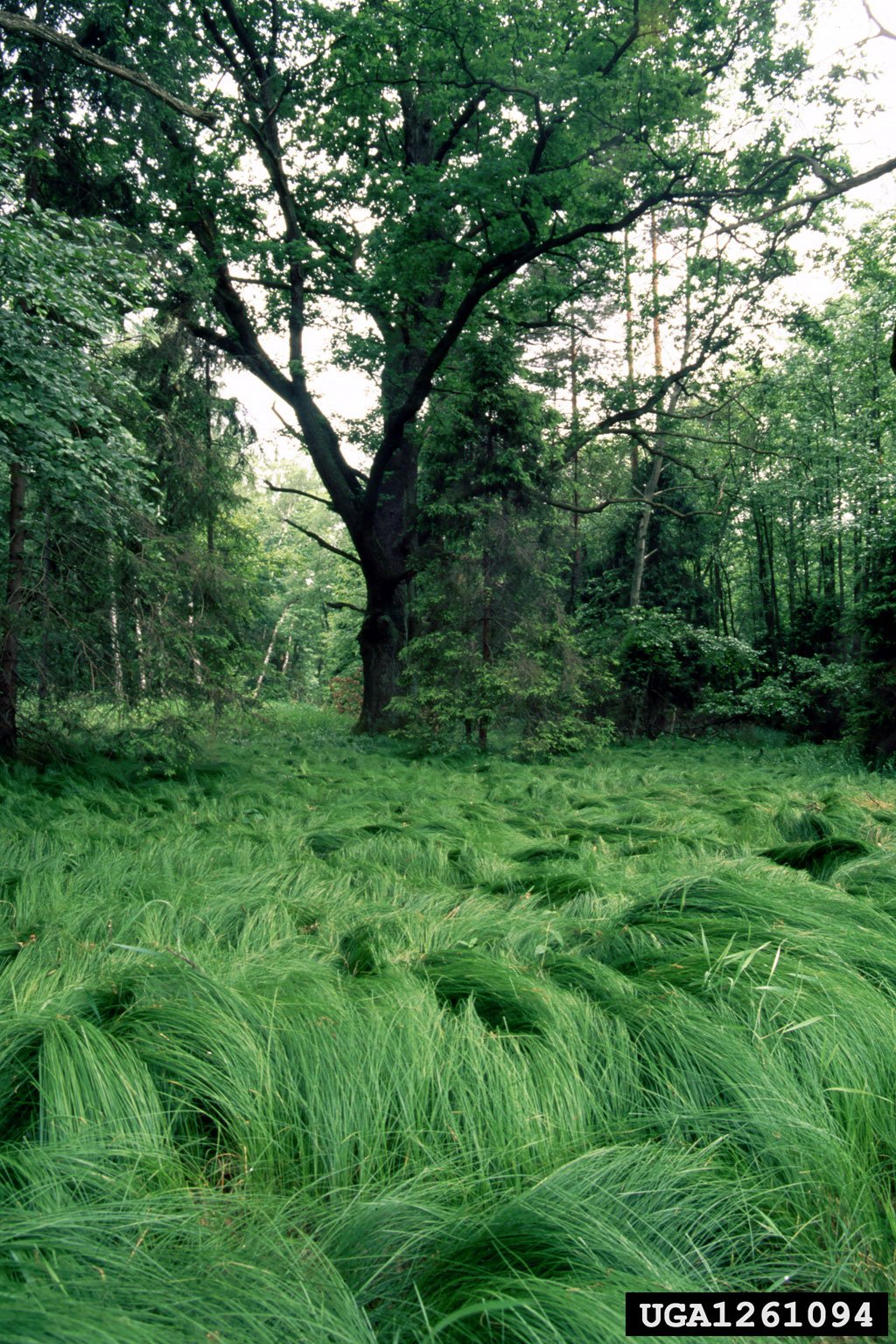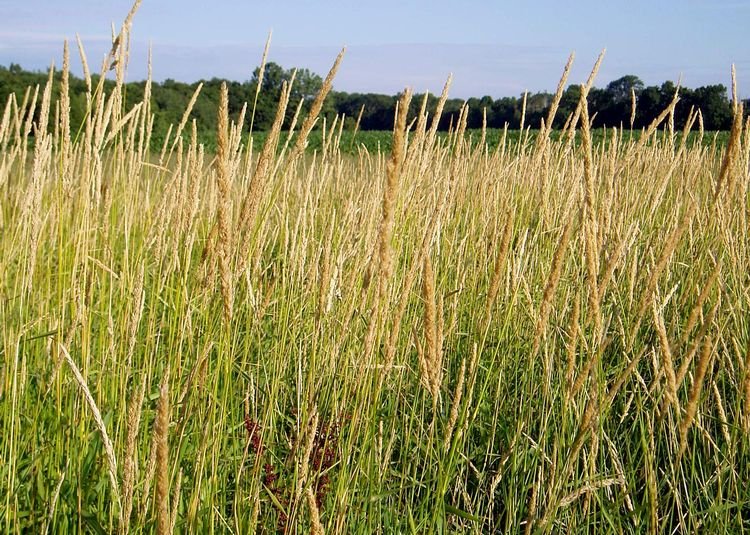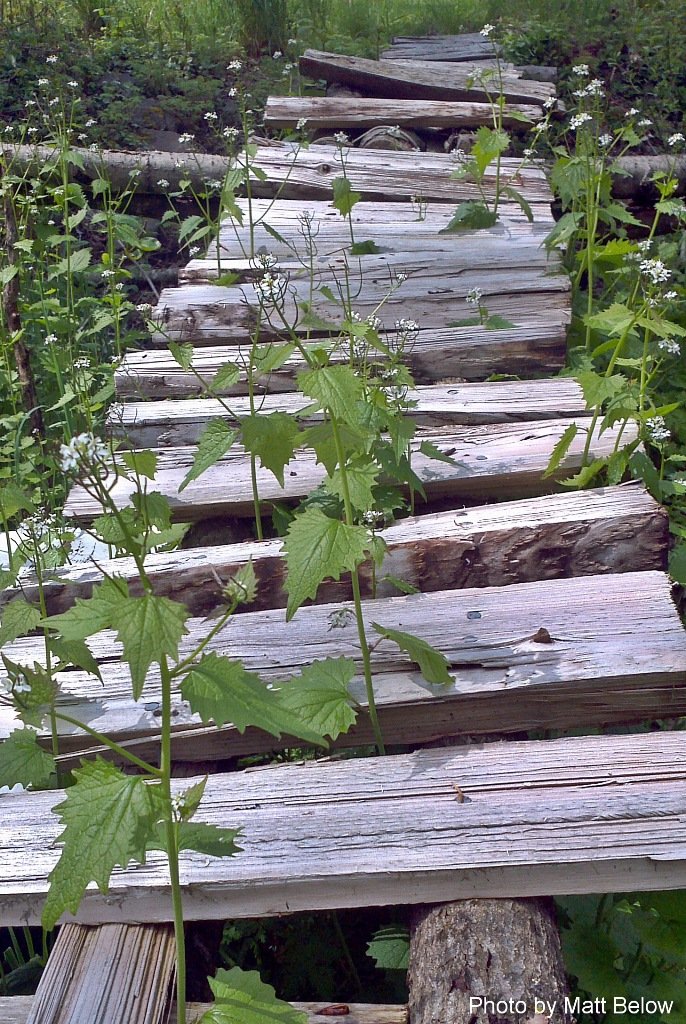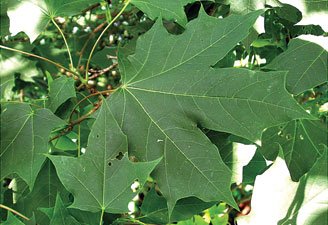Invasive Plants
by Emma McGraw
Baxter State Park is home to over 850 species of plants. 87% of these plants are native to Maine, whereas the rest are considered non-native or invasive. Invasive plant species can have several negative effects on native plant species and ecosystems as a whole. Here are a few that inhabit this beautiful Park.Bishop’s Goutweed, Aegopodium podagraria
Spotted: viewpoint embankment near Togue Gate
General Info: herbaceous, flowering dicot. Mainly planted in people’s gardens. Very hard to remove after it is established. It is an aggressive plant and can crowd out native species. Not native to North America.
Habitat: terrestrial (upland, non-aquatic), anthropogenic (man-made or disturbed habitats), river or stream floodplains, forests, meadows, and fields. Occurs in wetlands and non-wetlands. Found mostly in eastern and northern states. Can be spotted on Roadsides, lawn edges, forests, especially riparian types, and abandoned lots
Appearance: white flowers with five petals, inflorescence (flower array) length: 15–70 mm, width: 60–120 mm, umbel (flat or rounded inflorescence top) appearance, 12-25 branches in umbel, compound leaves (made up of two or more discrete leaflets), alternating leaf arrangement, toothed leaf blade edges, green, sometimes with lighter fringe on outer edges.
Common Reed, Phragmites australis
Spotted: roadside in SFMA
General Info: species of grass, not native to North America. Extremely invasive. Was introduced in the early 20th century. Detrimental to native plants and wildlife. Difficult to eradicate. Less susceptible to insect herbivory, allowing it survives much better than other native plant species.
Habitat: terrestrial, wetlands (land areas with soil that is saturated either permanently or seasonally), anthropogenic, brackish or salt marshes and flats, fens, fresh tidal marshes or flats, marshes, shores of rivers or lakes, wetland margins (edges of wetlands). Usually occurs in wetlands, but sometimes in non-wetlands. Found in every state.
Appearance: leaf blade length: 15-40 cm, rough and sandpapery, typically green in color. Tops are off-white to light brown in color, reddish-brown when new. Flowering inflorescence length: 150-350 mm. Plant height: 150-400 cm.
Purple Loosestrife, Lythrum salicaria
Spotted: shores of Matagamon Lake
General Info: very aggressive invader of sunny wetlands. Displaces native species and reduces plant and animal diversity.
Habitat: terrestrial, wetlands. Anthropogenic, marshes, meadows and fields, shores of rivers or lakes, swamps, wetland margins. Not native to North America. Found in almost every state except for a few in the southeast. Occurs only in wetlands.
Appearance: flowers can be a range of colors: blue, purple, pink, and red, have 6 petals, lanceolate (elongated and tapering) petal shape. The leaves have a simple design, with an alternating leaf pattern, entire leaf edge. Plant height - 50-150 cm.
White Poplar, Populus alba
Spotted: forest in SW corner of Park, near Abol Stream Trail
General Info: grows rapidly in harsh conditions. Because of this, it has naturalized in many places it is not native to and has become one of the most widespread trees in North America. They are used as windbreakers. Tolerant to urban pollution. Extremely invasive.
Habitat: Present in all 50 states. Terrestrial, anthropogenic, forest edges, meadows, and fields. Can also be spotted on roadsides, forest borders, waste areas, railroads, and near dwellings. Not native to North America.
Appearance: 3 lobed leaves, bright silver-white on the underside, green on the top, toothed blade edge, leaf blade length: 50–85 mm, deciduous, off-white and spotted bark, buds are long and furry.
Creeping Yellow Loosestrife, Lysimachia nummularia
Spotted: N/A
General info: spreads vegetatively, invasive.
Habitat: Not native to North America, origination from Eurasia. Present in most states except for a few in the midwest. Terrestrial, anthropogenic, wetlands and non-wetlands, riparian forests, floodplains, forests, meadows, and fields. Can also be found around abandoned homesteads, lawns, roadsides, and waste areas, most often on mesic soils in the shade.
Appearance: flower petal color: yellow, 5 petals, 20-30 mm in diameter, narrow tipped petals, simple leaf type, opposite leaf arrangement, 2 leaves per node, 10-35 mm long, green in color, matting/spreading plant.
Coltsfoot, Tussilago farfara
Spotted: N/A
General Info: it is believed that it was brought to America by settlers for its medicinal properties and purposes.
Habitat: Not native to North America, originally from Europe. Present in mostly northern states. Terrestrial wetlands, anthropogenic, non-wetlands and wetlands, shores of rivers or lakes. Can also be found on roadsides, stream and river banks, trail edges, and open or partially shaded, disturbed soil.
Appearance: tubular disk flowers in the center of the flower head and ray flowers around the edge. Both are yellow in color. Usually around 11-20 disk flowers in the center and over 50 ray flowers around the edge. Leaves are simple and basal. It does have what appear to be scale-like leaves growing up the stem.
Knapweed, Centaurea sp.
Spotted: Abol Stream & Blueberry Ledges trails.
General Info: invasive perennial.
Habitat: Not native to North America, origination in Europe. Found mostly in northern states. Terrestrial, anthropogenic, meadows and fields. Can also be found on roadsides and waste areas.
Appearance: the flower head is made up of disk flowers, with a bright fuchsia color. There are about 21-50 disk flowers on the flower head. Simple leaf type with alternating leaf arrangement.
Common Thistle, Cirsium vulgare
Spotted: N/A
General Info: biennial, invasive weed. Spreads rapidly due to avoidance by livestock.
Habitat: Not native to North America. Native to Eurasia. Found in every state. Terrestrial, anthropogenic, non-wetlands and wetlands, meadows, and fields. Can also be found on roadsides, clearings, and edges of lawns.
Appearance: Flower head has disk flowers of a fuchsia color. There are typically over 50 disk flowers in the flower head. Flower head base is large and bulbous. The leaf type is simple with an alternating leaf arrangement. Leaf blades are 150-400 mm in length. Plants are covered in sharp spines.
Creeping Thistle, Cirsium arvense
Spotted: N/A
General Info: perennial. Introduced to America in the 1600s. one of the most economically significant agricultural weeds in the world.
Habitat: Not native to North America. Native to Eurasia. Found in almost every state except for a few in the southeast. Terrestrial, anthropogenic, non-wetlands and wetlands, meadows, and fields. Can also be found on roadsides or clearings.
Appearance: flower head is made up of flower disks, light pinkish-purple in color. Approximately 21-50 disk flowers per flower head. The leaf type is simple with an alternating leaf arrangement. Leaf blade length is 30-300 mm. Stems are covered in sharp spines.
Wood Bluegrass, Poa nemoralis
Spotted: N/A
General Info: invasive. Origination from Eurasia.
Habitat: Not native to North America. Present in mostly northern states. Origination from Eurasia. Common in mixed woodlands of the northeastern United States and is spreading to the west. Terrestrial wetlands, anthropogenic, non-wetlands, and wetlands, riparian forests, mesic to dry-mesic upland forests, floodplains, forests, shores of rivers or lakes. Can also be found on roadsides and areas of habitation.
Appearance: flowers like wheat with spikelets. Leaf blades are 5-12 cm in length. Plant height is 30-80 cm. Green in color.
Reed Canary Grass, Phalaris arundincea
Spotted: N/A
General Info: some species of reed canary grass are native, but some are invasive. The Eurasian strain was introduced and was preferred for planting because it is hardier and was used to forage and erosion control.
Habitat: native to North America. Present in most states except for a few in the southeast. Invasive species are present in a few states. Terrestrial wetlands, anthropogenic, wetlands and non-wetlands, graminoid marshes, meadows and fields, shores of rivers or lakes, and wetland margins. Can also be found in ditches.
Appearance: flowers like wheat types, has spikelets of a light brown color. Leaf blade length: 10-30 cm. Leaf blades are rough and sandpapery. Plant height: 40-230 cm. Stems are thick and hardy.
WATCHLIST
INVASIVES
While these are the only invasive plants documented so far in the Park, there are unfortunately several others in Maine that could potentially become a threat to the Park in the near future. Here is a watchlist of invasive plants that are creeping into the neighborhood...Glossy False Buckthorn, Frangula alnus
General Info: shrub that was introduced to the United States before 1800. Its main dispersion is through birds eating the fruit and dispersing the seeds. It is hardy due to its shade tolerance.
Habitat: Not native to North America. Origination from Europe. Present in mostly northeastern states. Terrestrial wetlands, anthropogenic, wetlands and non-wetlands, forest edges, forests, meadows and fields, and swamps. Can also be found in forest fragments and roadsides.
Appearance: shiny leaves but no thorns. Simple leaf blade edge with an alternating leaf pattern. Sheds leaves in winter months. Leaf blade length: 30-80 mm. Bark is thin and smooth. Bears white flowers. Fleshy, small black or red berries.
Common Buckthorn, Rhamnus cathartica
General Info: the fruit of this bush is extremely cathartic, hence the second part of its genus classification. It spreads rapidly because of this cathartic effect when birds eat the berries and quickly end up dispersing them. It was introduced to America in the late 1700s and was popular for growing hedges, boundary lines, and wildlife cover.
Habitat: not native to North America. Origination in Europe. Present in most states except for most of those along the southern border of the United States. Terrestrial, anthropogenic, wetlands and non-wetlands, forest edges, forests, meadows and fields. Can also be found in forest fragments and roadsides.
Appearance: thorny shrub, opposite leaf pattern. Simple leaf blade type with 2 leaves per node. Toothed leaf blade edge. Sheds leaves in winter months. Leaf blade length: 30-65 mm. Bears yellow flowers. Berries are fleshy, laxative properties upon consumption. Black in color.
Morrow’s Honeysuckle, Lonicera morrowii
General Info: Japanese shrub. Introduced to the United States by Dr. James Morrow in the 1860s as ornamental. Spreads easily in the forest understory.
Habitat: not native to North America. Origination Japan. Present in mostly northeastern states. Terrestrial, anthropogenic, non-wetlands and wetlands, upland and riparian forests, floodplains, forests, wetland margins. Can also be found on edges of swamps, field edges, fence rows, roadsides, and areas of habitation.
Appearance: hollow stems. Leaves are hairy on the underside with a simple leaf type. 2 leaves per node. Sheds leaves in winter months. Leaf blade length: 25-50 mm. Flowers are finely hairy. Flower petals can be a variety of colors; white, pink, and yellow. Two cycles of petals per flower head. Long and slender petals. Bark is ridged and plated. Bears fleshy berries red or yellow in color.
Garlic Mustard, Allaria petiolata
General Info: Invasive introduced to America from Eurasia. Originally imported in the nineteenth century as a kitchen garden herb and salad green. The plant is edible; leaves have a sharp, garlicky flavor. Can be eaten raw or boiled.
Habitat: Not native to North America. Origination in Eurasia. Present in most states except for a few in the southwest. Terrestrial, anthropogenic, non-wetlands and wetlands, riparian terraces, floodplains, forest edges, shady, moist, rich forests. Can also be found on roadsides and are frequently in partially shaded plant communities.
Appearance: simple leaf type, toothed leaf edge. Alternating leaf arrangement, green in color. Small, white flowers. 4 petals on each flower. Plant height: up to 130 cm.
Japanese Winged Knotweed, Fallopia japonica
General Info: herbaceous. One of the most invasive species in the world. Has medicinal properties. Introduced to America in the 1870s as an ornamental and forage plant. Extremely aggressive. Has been recorded growing through 2 inches of concrete. Can regenerate from just 5 grams of the root tissue.
Habitat: not native to North America. Origination in Asia. Present in most states except for on the southern border. Terrestrial, anthropogenic, non-wetlands and wetlands, floodplains, forest edges, meadows and fields, shores of rivers or lakes. Can also be found on roadsides and waste areas.
Appearance: Small, branching flowers. Varying petal colors; pink, red, or white. 5 petals on each flower. Inflorescence length: 40-120 mm. Simple Leaf type, green in color. Alternating leaf arrangement. Plant height: 150-300 cm.
Norway Maple, Acer platanoides
General Info: close in appearance to Sugar Maples. To tell the difference, a leaf must be torn off. A white sap will exude when the petioles are broken. Introduced to America by famous Pennsylvanian Botanist, John Bartram in 1756. Popular as a hardy street tree. Invasive and shades out native trees.
Habitat: terrestrial, anthropogenic, non-wetlands, forest edges, and forests. Can also be found on roadsides, waste areas, forest fragments, and areas of habitation
Appearance: Gray bark with even grooves. Simple leaf type with 2 leaves per node. The leaves branch off into 5 main sections or lobes and have distinctive teeth. Deciduous; leaves drop off during winter months. Leaf blade length: 100-150 mm. Leaf blade width: 100-180 mm. Green or reddish brown in color. The seeds that are produced have wings.
All information about these plants was gathered from https://gobotany.nativeplanttrust.org/.
For more information on the effects of invasive plants on ecosystems, visit https://www.fs.usda.gov/ccrc/topics/invasive-plants.
